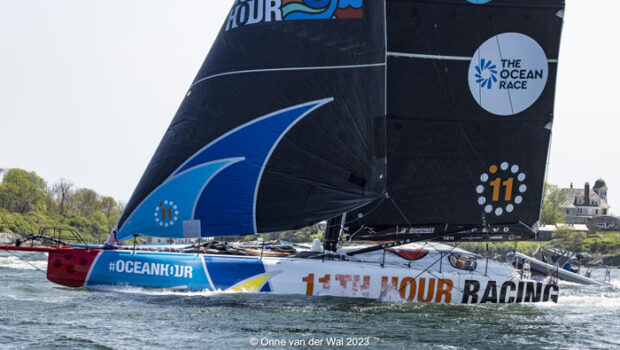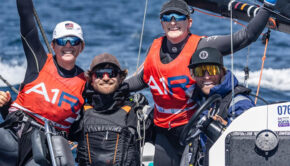Many shades of offshore racing
Published on May 11th, 2023
The 14th edition of The Ocean Race hardly looks like its history which began in 1973. While previous entrants resemble most yachts in the sport, today’s field is more spaceship that sailboat.
The 60-foot IMOCA (above) being used for the 2023 race is mostly sailed indoors, with an auto-pilot guiding its course. The four crew endure a turbulent ride, as the foil-assisted hull is in constant motion, with their attention toward the electronics that trim the boat.
Venturing outside to feel the wind is to risk a firehouse in the face. Where going offshore allows sailors to unplug from society, the IMOCA does nearly the opposite. Photos of the boats often show no sign of life, and along with the complexity and cost, participation isn’t what it once was.
Conversely, in the realm of crewed global events, the Clipper Round the World Yacht Race remains fully enrolled since its start in 1996. When the 2023-24 edition gets underway, 11 70-foot yachts and over 700 crew will experience offshore racing in its traditional form.
But in this report by The Guardian, they reveal how this race created for amateurs seeking the ultimate challenge can come at a high cost… in many ways:
On 18 November 2017, Simon Speirs, 60, a retired lawyer from Bristol, England, was hauling on his waterproofs below deck on a yacht in rough seas in the Southern Ocean. For nearly three months, he’d endured cold, cramped quarters, soaked clothing, sea sickness and very little sleep.
As one of the crews competing in the Clipper Round the World yacht race, Speirs had completed more than 13,000 nautical miles since leaving Britain, but the wild remoteness of the southern oceans was more challenging than anything he had experienced before.
Speirs had a hacking cough and a heavy cold, but as leader of the watch he had to get out on deck. The race had so far taken them across the northern Atlantic Ocean to Uruguay and back across the southern Atlantic to South Africa. Two months in, he’d asked for a break. But after only a week his replacement had fallen out of his bunk and hurt his wrist, and Speirs had to resume his role.
By 2pm, the wind was getting stronger; the yacht lurched up and down waves the size of steep hills. The captain ordered the crew to change the headsail to make the boat easier to control. Speirs made his way to the foredeck, but, at that moment, a massive wave hit, sweeping him over the side.
Speirs was still attached to the boat with a tether. For several minutes he was dragged behind the boat in the roiling waves, while the crew tried to haul him back in. Then the clip on his harness snapped, and he lost contact with the yacht. It took three attempts and 32 minutes to pull him back on board, by which time he was dead. – Full report








 We’ll keep your information safe.
We’ll keep your information safe.